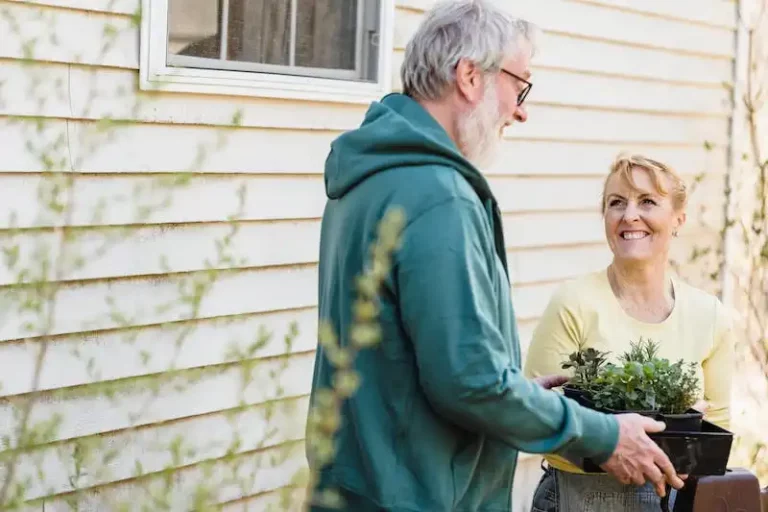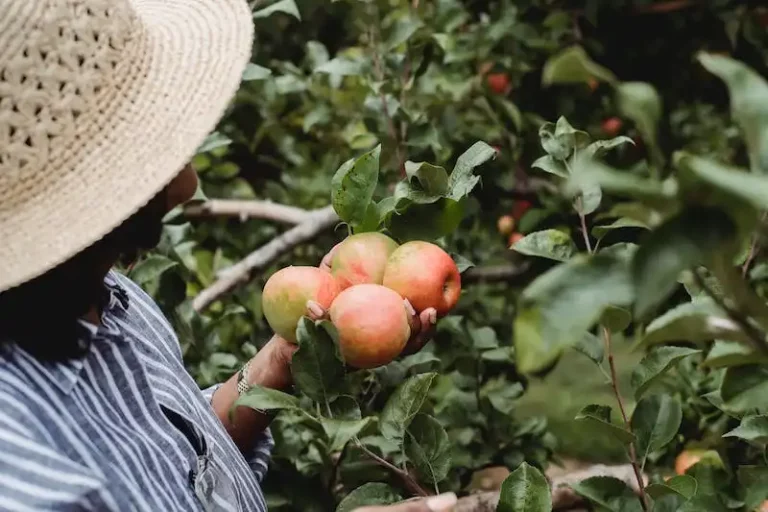Starting seeds is an easy and helpful way to grow a wide variety of plants. However, there are some common mistakes that gardeners often make when it comes to seed starting. One of the most common mistakes is overwatering. Many gardeners tend to water their seeds too much, thinking that they need a lot of moisture to grow. But in reality, overwatering can lead to rot and weak seedlings.
Another common mistake is not providing enough light. While some seeds can germinate in low light conditions, most plants need high light levels to grow properly. It’s important to place your seed starting supplies in a location where they can receive sufficient light, either from a window or with the help of artificial lights.
When it comes to containers for seed starting, many gardeners make the mistake of using plastic. While plastic containers are convenient and can come in a wide variety of sizes, they can also hold too much moisture and not provide the necessary air flow. Using containers made of breathable materials, such as peat pots or cell packs, can be a better option.
Another common mistake is starting seeds too early. It’s important to know exactly when to start your seeds based on the growing season and the specific needs of the plants you are growing. Starting seeds too early can lead to weak and spindly seedlings that may not survive when they are transplanted outdoors.
Lastly, it’s important to keep the environment consistent for seed starting. Fluctuations in temperature and moisture can cause stress to seedlings and hinder their growth. Maintaining a consistent temperature and moisture level in the seed starting area can help ensure that your seeds grow into healthy and strong plants.
In this article, we will discuss these common seed starting mistakes in more detail and provide simple tips on how to avoid them. By following these guidelines, you can ensure that your seeds have the best chance of germinating and growing into strong and healthy plants.
Step-by-Step How to Start Flower Seeds Indoors for a Beautiful Garden
Starting flower seeds indoors is a great way for growers to get an early jump on the growing season. It allows you to start your plants ahead of time and gives them a head start on growing taller and stronger before they are transplanted outdoors. In this step-by-step guide, we will discuss how to start flower seeds indoors to ensure a successful and beautiful garden.
Step 1: Choose the right seeds
First of all, choose the type of flower seeds you want to grow. Annual flowers are typically the easiest to start indoors, as they will bloom and provide beautiful flowers all season long. Some recommended flower seeds for starting indoors are pansies, petunias, marigolds, and zinnias. Make sure to choose flower seeds that can be started indoors without any issues.
Step 2: Prepare the containers and tools
Once you have chosen your flower seeds, it’s time to prepare the containers. Use seed-starting trays or biodegradable peat pots for easy transplanting later on. Make small holes in the bottom of each container for drainage, and fill them with a seed-starting mix. These containers should be placed on a tray to catch any excess water.
Step 3: Sow the seeds
Lightly press the flower seeds into the soil according to the recommended planting depth, which is usually about twice the height of the seed. Some flower seeds are tiny and should be sown on the surface of the soil and lightly pressed in. Make sure to label each container with the name of the flower seeds sown, as it can be easy to forget what was planted where.
Step 4: Provide the right conditions
Flower seeds need warmth, light, and moisture to germinate. Place the seed containers in a warm location, around 70-75 degrees Fahrenheit. You can use a heat mat to provide the consistent warmth needed for germination. Keep the soil consistently moist, but not overly wet. Using a misting bottle or gentle watering can help prevent overwatering.
Step 5: Give them enough light
Once the flower seeds have sprouted, they need plenty of light to grow strong and healthy. Place them near a sunny window or under fluorescent lights for 14-16 hours a day. Keep the lights about 2-4 inches above the seedlings to prevent them from getting too tall and leggy.
Step 6: Transplant outdoors
When the last frost date has passed and the weather is consistently warmer, your flower seedlings are ready to be transplanted outdoors. Harden them off gradually by placing them outside for a few hours each day, gradually increasing the time over the course of a week. After that, they can be planted in the garden, where they will continue to grow and eventually flower.
By following these step-by-step instructions, you can start flower seeds indoors and achieve a beautiful garden with a wide variety of flowering plants. Remember to choose the right seeds, prepare the containers, provide the right conditions, and give them enough light. With a little care and patience, you can enjoy a stunning garden filled with colorful flowers all season long.
6 Common Seed Starting Mistakes Gardeners Make – And How To Avoid Them
When it comes to starting seeds, many gardeners make some common mistakes that can hinder the growth and success of their plants. In this article, we will discuss these common seed-starting mistakes and provide helpful tips on how to avoid them.
Mistake 1: Not providing enough light
One of the most important factors for seed germination is proper lighting. Many gardeners make the mistake of not providing enough light to their seedlings, which can lead to weak and leggy plants. To avoid this, invest in a set of grow lights or place your seed trays near a sunny window.
Mistake 2: Using the wrong type of soil
The soil you use for seed starting plays a crucial role in the success of your plants. Using a lightweight and well-drained seed-starting mix is essential. Avoid using regular garden soil, as it can be too heavy and may not provide the optimum conditions for germination.
Mistake 3: Overwatering or underwatering
Proper watering is another crucial step in seed starting. Overwatering can lead to fungal diseases and root rot, while underwatering can cause the seedlings to dry out and die. To ensure proper moisture levels, use a mister or a watering can with a fine nozzle and water the soil lightly.
Mistake 4: Starting seeds too early or too late
Timing is everything when it comes to starting seeds. Many gardeners make the mistake of starting seeds either too early or too late in the growing season. It’s important to know the specific planting times for different varieties and take into account the length of time it takes for them to flower.
Mistake 5: Not considering the size of the seedlings
When it comes to seedling care, size matters. Some gardeners make the mistake of overcrowding their trays or pots, which can lead to stunted growth and competition for resources. Make sure to give each seedling enough space to grow by planting them at the proper distance apart.
Mistake 6: Planting seedlings backwards
Believe it or not, planting seedlings backwards is a common mistake that can easily be avoided. Always pay attention to which end of the seed is the top and which is the bottom. Planting the seedling upside down can prevent it from properly growing and emerging from the soil.
By avoiding these common seed starting mistakes, you can greatly improve the success of your garden. Whether you’re a seasoned gardener or just starting out, following these step-by-step tips will help you have a bountiful and thriving garden for years to come.
The 6 Biggest Seed Starting Mistakes Gardeners Make
Gardeners, especially those new to seed starting, often make several mistakes that can lead to poor germination rates and weak seedlings. By avoiding these common pitfalls, you can save time, money, and frustration when starting your plants from seed.
1. Sowing Seeds Too Deep: Many gardeners make the mistake of sowing seeds too deep in the soil. It’s important to read the seed packet instructions and follow the recommended planting depth. Seeds need to be sown at a depth that allows them to receive the right amount of light and moisture for germination.
2. Using Incorrect Lighting: Another common mistake is not providing plants with the right type of lighting. While a sunny window may seem like an ideal spot, it often doesn’t provide the optimum light levels for seed starting. Fluorescent lights, when used properly, can provide the right amount and spectrum of light for growth.
3. Overwatering: Many gardeners make the mistake of overwatering their seedlings, which can lead to the rotting of roots and the growth of mold. It’s important to water seedlings carefully and only when the soil is dry to the touch. This will ensure that the plants get the moisture they need without drowning them.
4. Underwatering: On the other hand, some gardeners make the mistake of underwatering their seedlings, causing them to become weak and stunted. Adequate moisture is essential for germination and proper growth. Be sure to water your seedlings regularly, but avoid creating waterlogged conditions.
5. Starting Seeds Too Early: Many gardeners get excited about the upcoming gardening season and start their seeds too early, only to find that the plants become leggy and weak by the time it’s safe to plant them outdoors. It’s important to know the frost date for your region and start seeds accordingly. This will ensure that the plants are at their best when it’s time for them to go outside.
6. Ignoring Hardening Off: Hardening off is the process of gradually acclimating seedlings to outdoor conditions, such as temperature fluctuations and direct sunlight. Many gardeners make the mistake of skipping this step, causing their seedlings to suffer from shock when they’re transplanted. To avoid this, be sure to gradually expose your seedlings to outdoor conditions for a few hours each day before planting them in their permanent location.
Avoiding these common seed starting mistakes can greatly increase your chances of success in the garden. By following these simple steps and providing your seedlings with the proper environment and care, you’ll be well on your way to growing healthy, strong plants to enjoy throughout the growing season.

